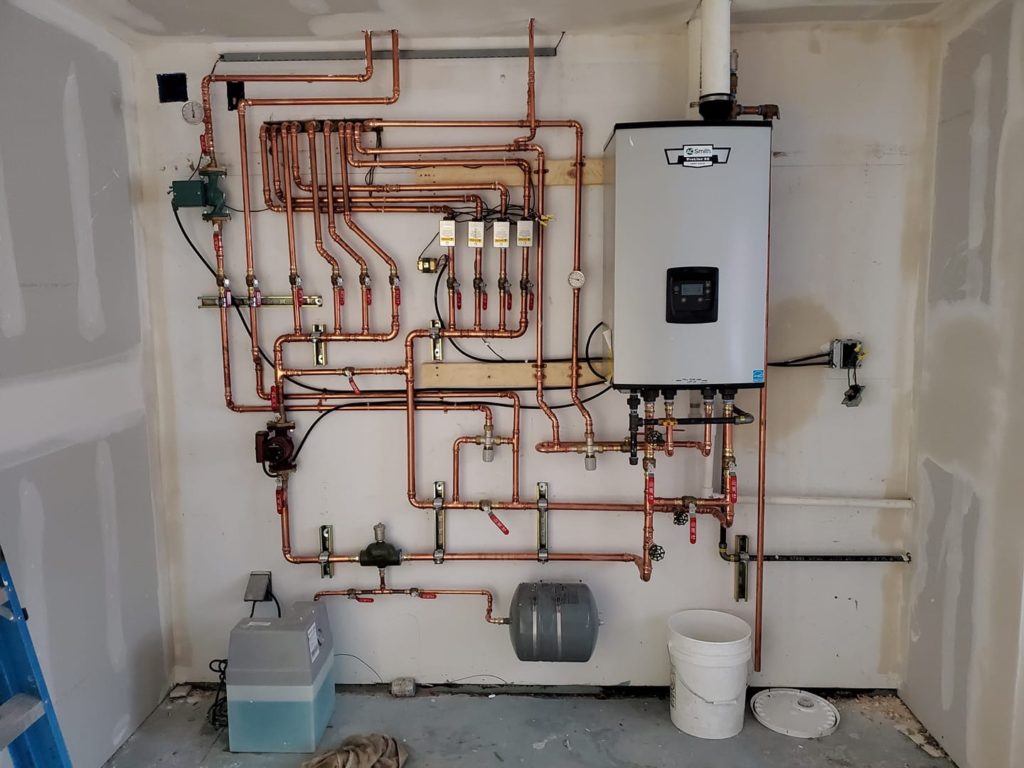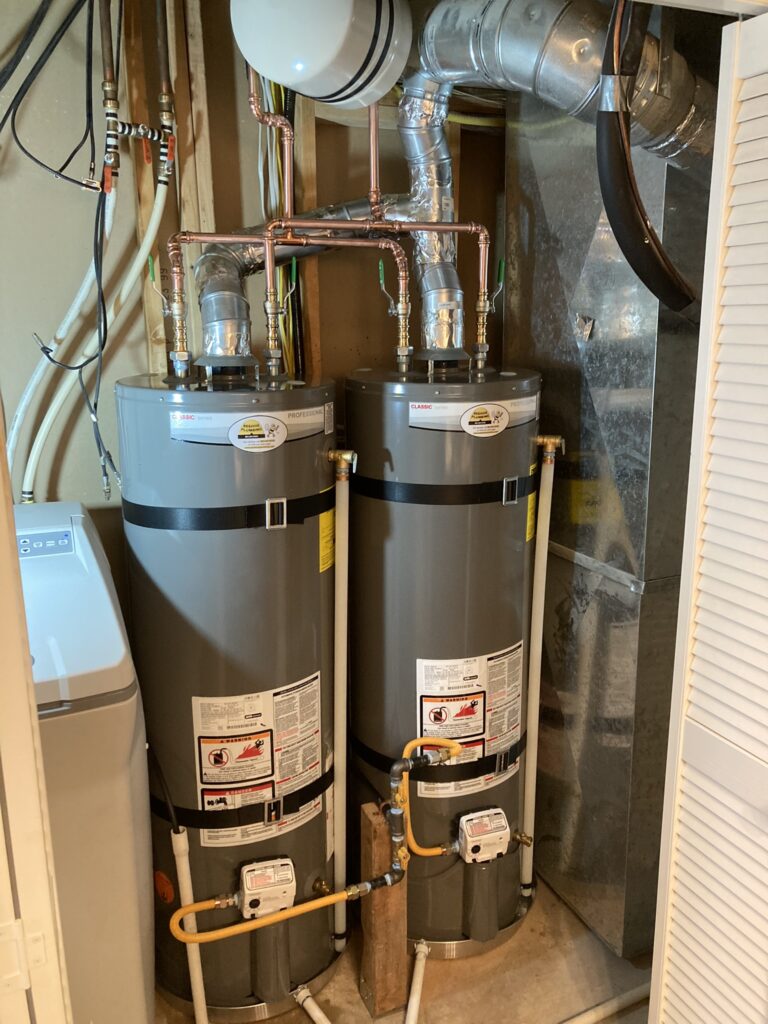Expert Water Heater Installation Services for Reliable Home Heating
Complete Guide to Water Heating UnitInstallment and Replacement
Understanding the intricacies of water heating unit setup and substitute is crucial for house owners looking for to ensure efficiency and dependability in their warm water supply. From picking the ideal type and size to carrying out a smooth installment procedure, a number of factors have to be considered to stay clear of usual mistakes. This guide will offer you with the needed steps and insights to navigate the complexities of this home enhancement task, while likewise emphasizing important upkeep methods that can extend the life of your system. As you explore these elements, you might find yourself reassessing your current setup and identifying locations for improvement.
Types of Hot Water Heater
When considering hot water heater installment and substitute, it is vital to comprehend the different kinds of hot water heater readily available out there. The most common types consist of tank hot water heater, tankless water heating units, warm pump hot water heater, and solar hot water heater.
Container water heating units are traditional systems that keep a details volume of hot water, making them readily offered when needed. In contrast, tankless water heaters supply warm water on demand, removing the need for storage.
Warm pump water heating systems make use of electrical energy to move heat from the air or ground to heat water, using significant energy cost savings however calling for even more space and certain installment conditions. Finally, solar hot water heater harness solar power to warm water, giving an environment-friendly alternative with possible long-term cost savings, although they usually call for a backup system for cloudy days.
Comprehending these options ensures educated choices relating to installment and replacement, catering to certain needs and choices.
Selecting the Right Dimension
Choosing the ideal dimension for a water heating unit is essential to ensure optimum efficiency and effectiveness. An unit that is also little will certainly have a hard time to satisfy household needs, resulting in irregular hot water availability and increased energy consumption. On the other hand, an oversized water heating unit can cause unneeded power waste and higher energy expenses.
To establish the ideal dimension, take into consideration the family's optimal warm water usage. This can be determined based upon the variety of occupants and their common warm water needs. A family members of 4 might call for a water heating system with a capability of 50 to 80 gallons, depending on the use patterns, such as simultaneous showers and washing.
Additionally, analyze the recovery rate, which measures how swiftly a heating system can renew warm water after it has actually been utilized. For tankless versions, concentrate on the circulation rate, gauged in gallons per min (GPM), to ensure it fulfills the home's synchronised need.

Installation Refine Overview

Following, the old unit must be separated and eliminated, taking care to comply with local codes and laws regarding disposal. As soon as the old system is out, the new hot water heater can be placed in position. This action involves attaching the water lines, guaranteeing that all installations are leak-free and safe and secure.
After establishing water connections, it's necessary to attach the power supply, whether electrical or gas, following the maker's instructions thoroughly. As soon as all connections are made, the system ought to be filled with water, and the power can be transformed back on. It's important to check for Source leakages and guarantee the water heating unit is working appropriately prior to finishing the setup procedure.
Typical Installment Mistakes

Another regular blunder is overlooking to comply with neighborhood codes and regulations. Failing to stick to these standards can not only lead to security dangers yet might also result in costly fines or the need for expensive reinstallation.
Failing to safeguard connections or using the wrong type of installations can lead to leakages and water damages. By avoiding these usual installation mistakes, home owners can guarantee their water heating unit runs securely and successfully, optimizing efficiency and longevity.
Maintenance Tips for Long Life
Proper upkeep of a hot water heater is essential for its long life and ideal performance. Normal assessments and maintenance can protect against expensive repairs and prolong the home appliance's life expectancy. Begin by inspecting the temperature setup; it must generally see it here be established between 120 ° F and 140 ° F for optimum power effectiveness and safety.
Every six months, purge the tank to eliminate sediment build-up, which can hinder home heating efficiency and trigger deterioration. To do this, turn off the heating unit, connect a hose pipe learn this here now to the drainpipe shutoff, and let the water run up until it is clear.
Anode poles need to be examined each year and changed when they are corroded. These poles aid prevent storage tank deterioration by attracting corrosive elements in the water.
Furthermore, examine the stress safety valve frequently to guarantee it is functioning correctly. This valve is important for protecting against too much stress accumulation within the container.
Lastly, consider scheduling an expert maintenance check every few years for thorough evaluations and servicing. By adhering to these maintenance suggestions, property owners can substantially enhance the efficiency, safety, and life-span of their hot water heater, guaranteeing trustworthy hot water for several years to find.
Conclusion
In final thought, proper installment and maintenance of water heaters are important for guaranteeing performance and durability. By recognizing these vital aspects, home owners can accomplish a reliable hot water supply while decreasing potential concerns related to water heating system operation.
Comprehending the intricacies of water heating unit installment and substitute is crucial for homeowners seeking to make certain efficiency and dependability in their warm water supply.Container water heating units are traditional systems that keep a certain quantity of hot water, making them readily offered when required. In comparison, tankless water heaters give hot water on need, removing the demand for storage. Choosing a water heating system that is either also small or too big can lead to inadequacies, resulting in inadequate hot water supply or extreme energy usage.
By recognizing these essential elements, property owners can attain a trusted warm water supply while minimizing potential problems connected to water heating system procedure. drain cleaning.